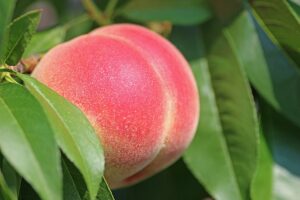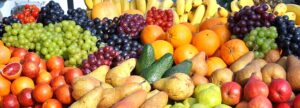Introduction
Carbohydrates are one of the essential macronutrients that provide energy to the body. They are found in various foods and play a crucial role in maintaining overall health and well-being. In this article, we will explore the elements contained in carbohydrates and understand their significance in our diet.
Monosaccharides: The Building Blocks
Monosaccharides are the simplest form of carbohydrates and serve as the building blocks for more complex carbohydrates. They are single sugar molecules that cannot be broken down further. The three most common monosaccharides are glucose, fructose, and galactose. Glucose is the primary source of energy for our body, while fructose is commonly found in fruits and honey. Galactose is a component of lactose, the sugar found in milk and dairy products.
Disaccharides: Two Sugar Units
Disaccharides are formed by the combination of two monosaccharides through a process called dehydration synthesis. This process involves the removal of a water molecule to form a bond between the two sugars. The most well-known disaccharides include sucrose, lactose, and maltose. Sucrose, commonly known as table sugar, is composed of glucose and fructose. Lactose, as mentioned earlier, is made up of glucose and galactose. Maltose is formed by two glucose molecules and is often found in germinating grains.
Polysaccharides: Complex Carbohydrates
Polysaccharides are complex carbohydrates composed of long chains of monosaccharides. They are formed by the bonding of multiple monosaccharide units through dehydration synthesis. Polysaccharides serve as a storage form of energy in plants and animals. The three main types of polysaccharides are starch, glycogen, and cellulose.
Starch is the primary storage carbohydrate in plants and is found in foods like potatoes, rice, and grains. It consists of long chains of glucose molecules. Humans can digest starch and convert it into glucose for energy.
Glycogen is the storage form of glucose in animals, including humans. It is primarily stored in the liver and muscles and acts as a readily available source of energy when needed.
Cellulose, on the other hand, is a structural polysaccharide found in the cell walls of plants. It provides rigidity and strength to plant cells. Unlike starch and glycogen, humans lack the necessary enzymes to digest cellulose fully. However, it serves as an important source of dietary fiber, aiding in digestion and promoting bowel regularity.
Conclusion
Carbohydrates are a vital component of our diet, providing energy and serving various functions in the body. Monosaccharides, disaccharides, and polysaccharides are the three main elements contained in carbohydrates. Monosaccharides are the building blocks, disaccharides are formed by the combination of two monosaccharides, and polysaccharides are complex carbohydrates made up of long chains of monosaccharides. Understanding the different types of carbohydrates can help us make informed choices about our diet and maintain a balanced and healthy lifestyle.
References
1. Mayo Clinic: www.mayoclinic.org
2. Harvard T.H. Chan School of Public Health: www.hsph.harvard.edu
3. National Institute of Diabetes and Digestive and Kidney Diseases: www.niddk.nih.gov













